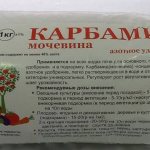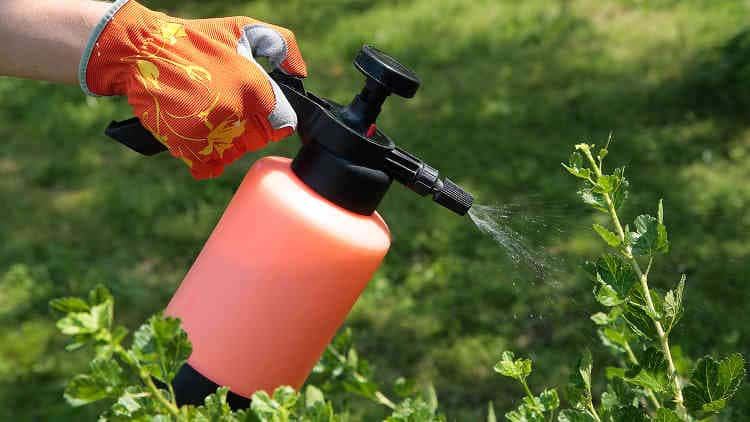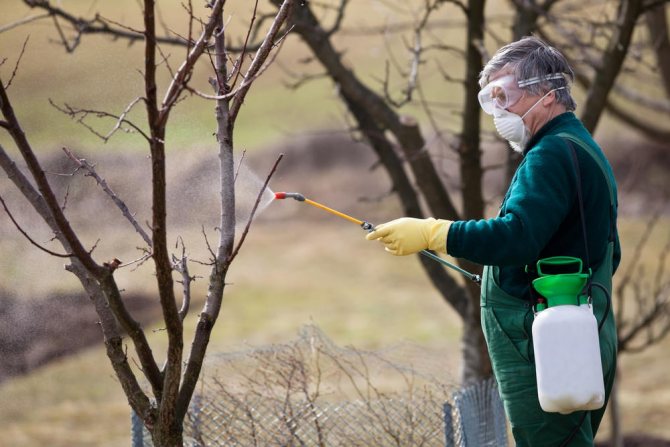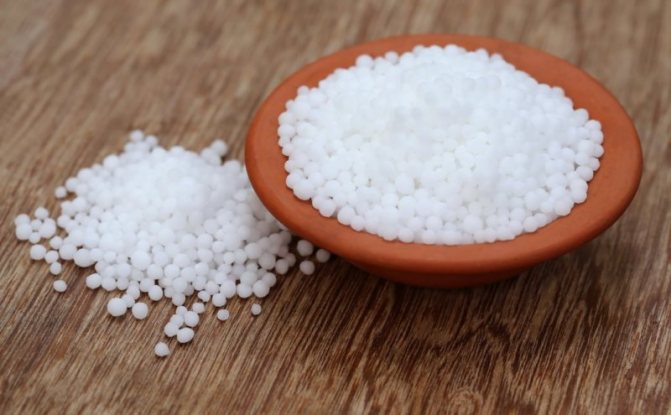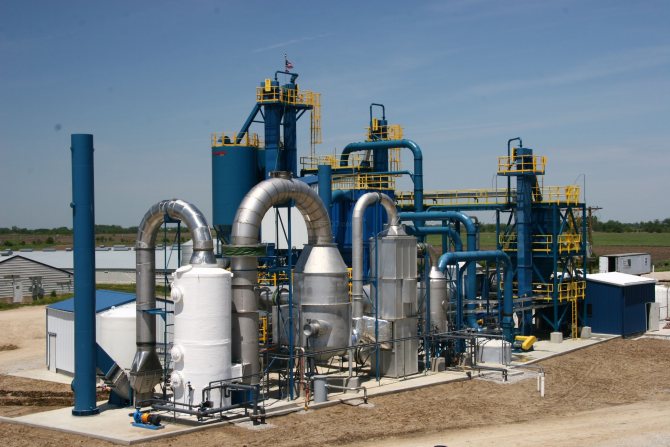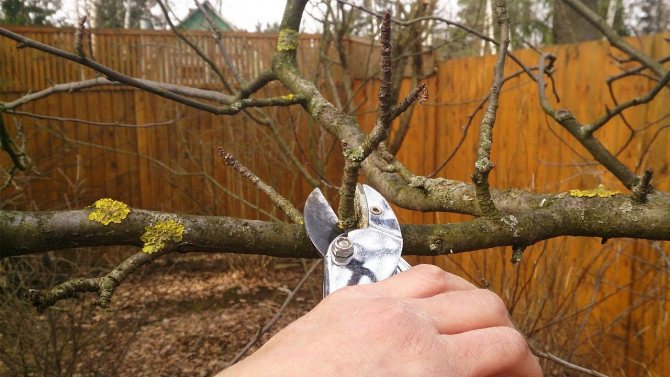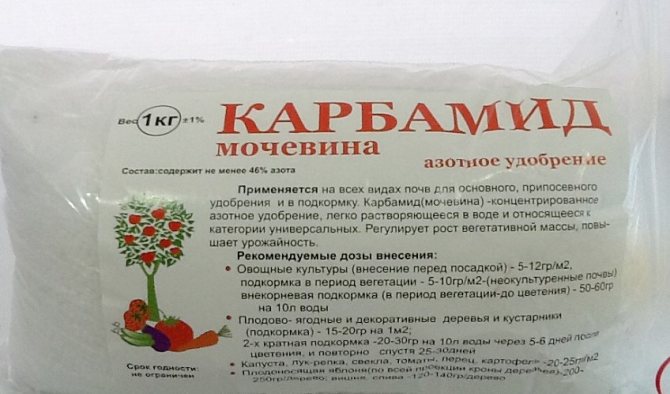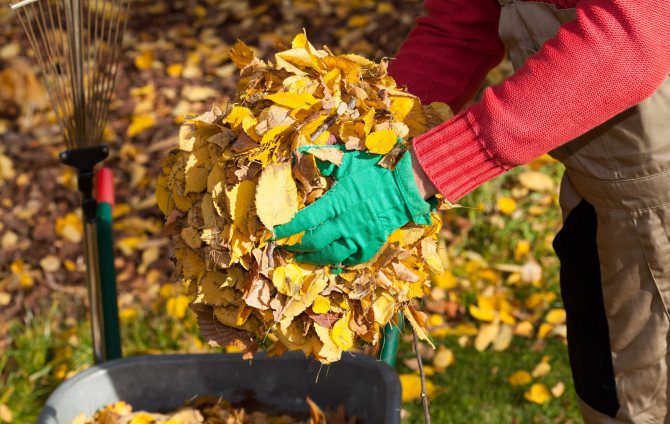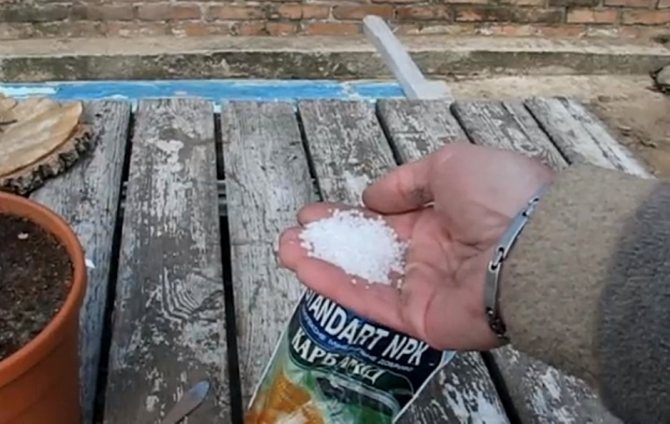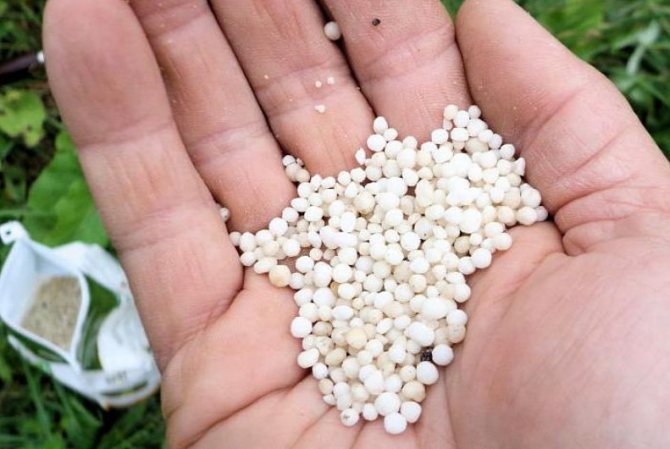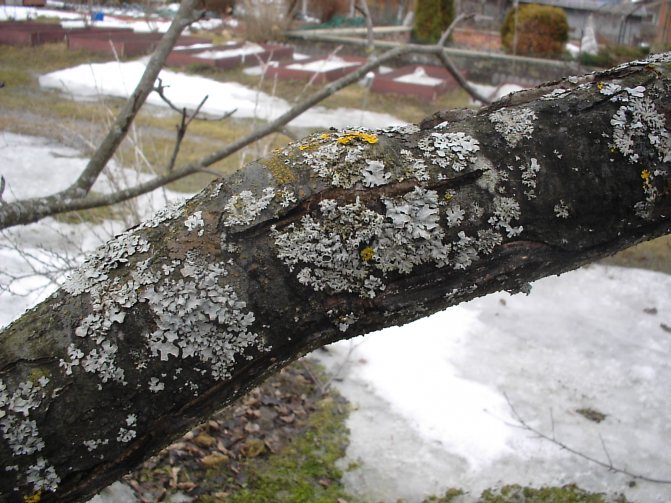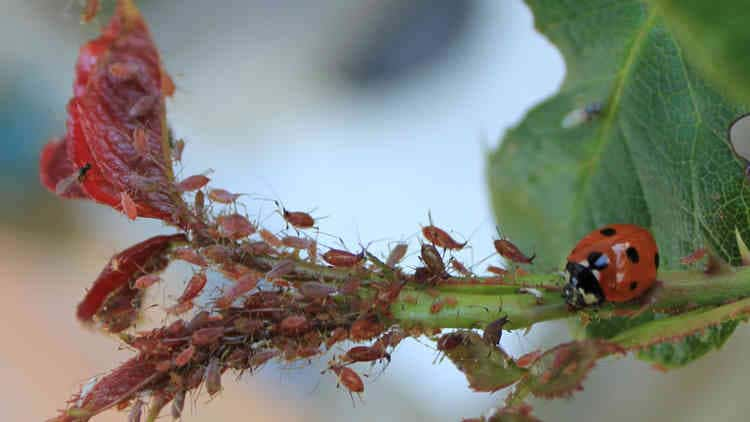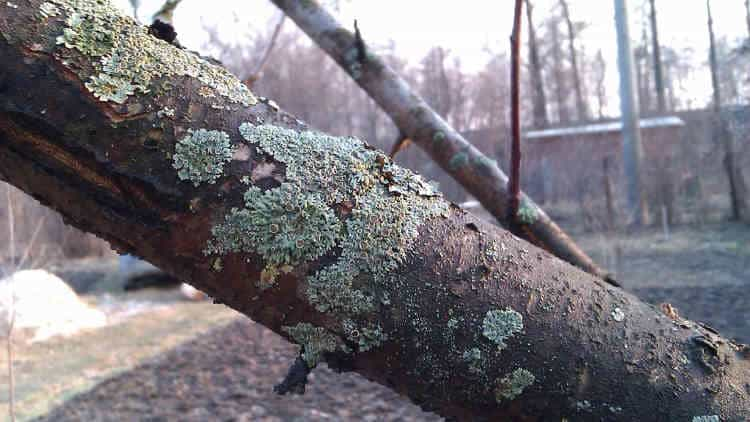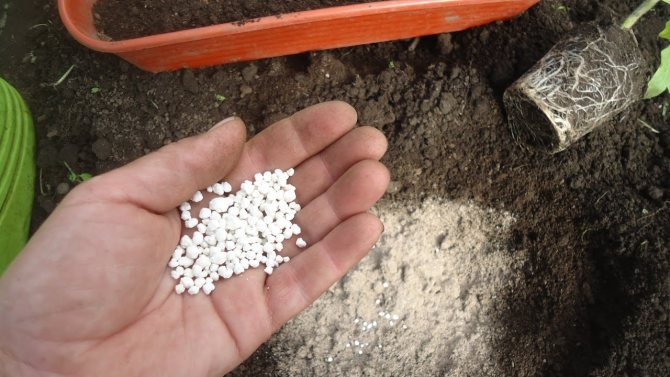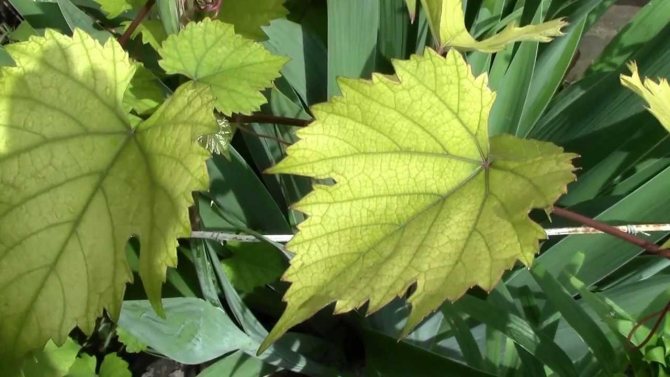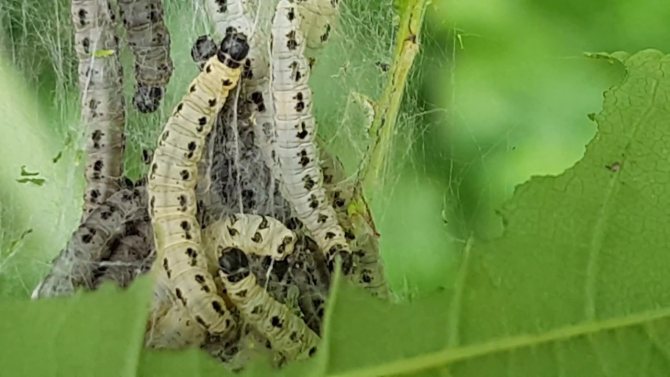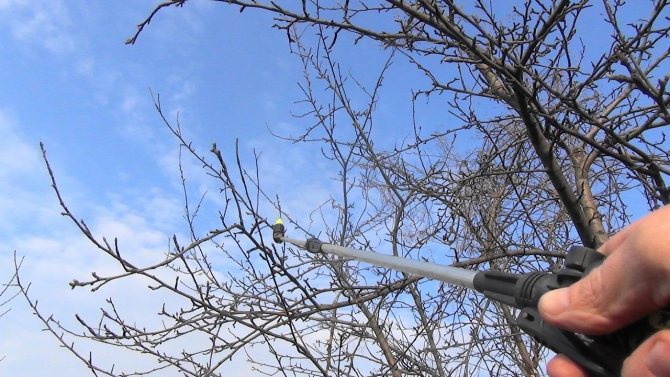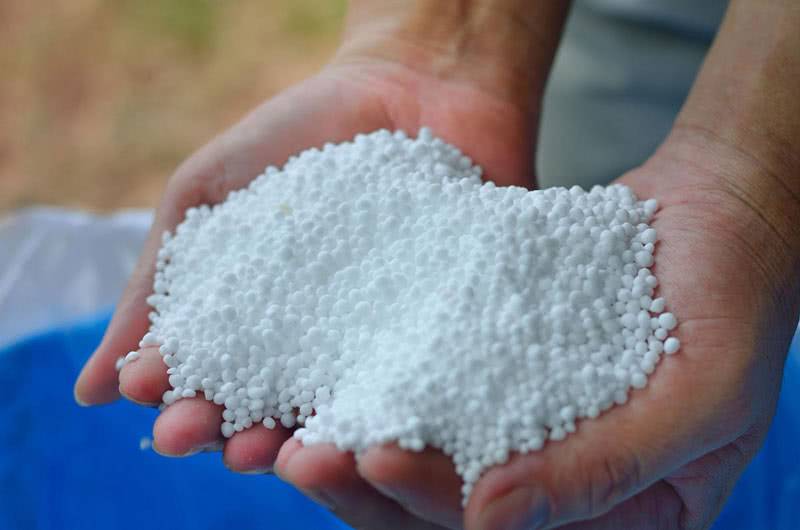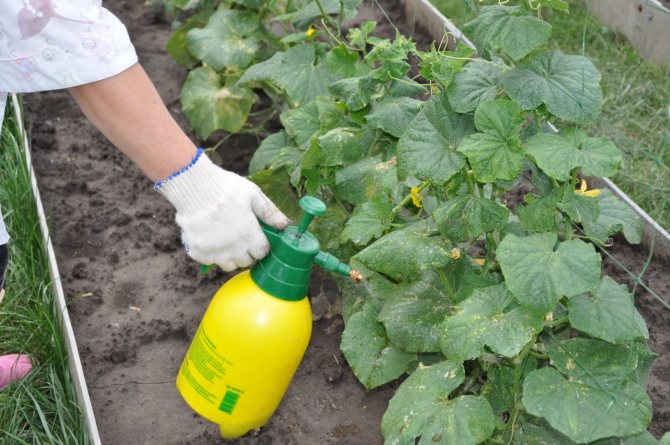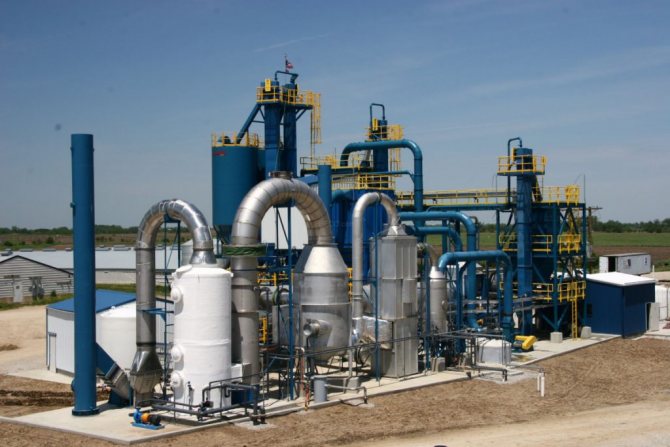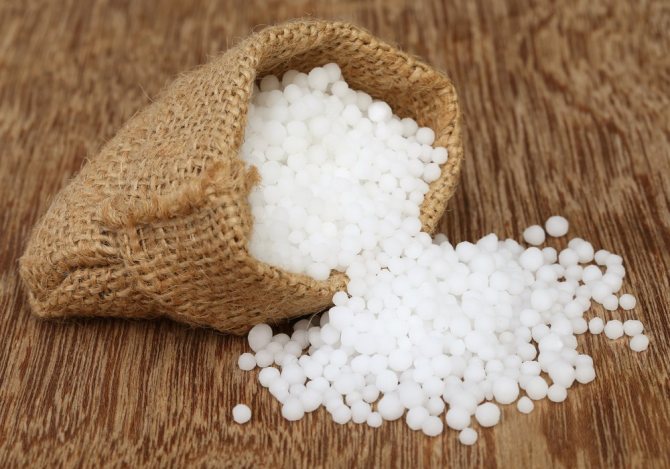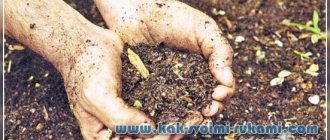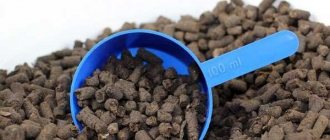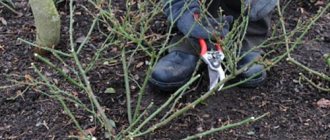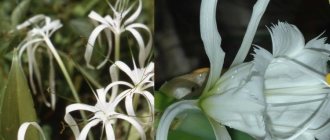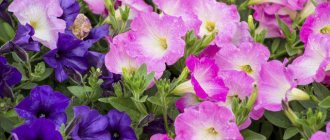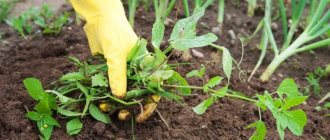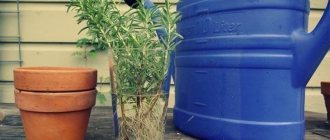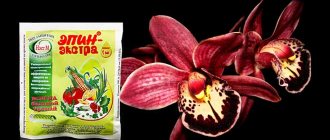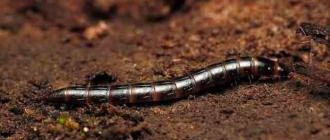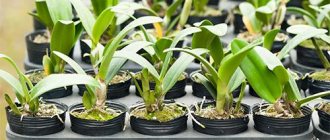Fertilizing and processing plants is a prerequisite for obtaining a decent harvest. The use of various formulations and means does not always provide the expected results, and sometimes is directly related to the deterioration of the appearance of vegetation and the state of human health.
A reliable and proven method, which is considered to be universal, is the use of urea (urea) fertilizer. It is used in almost all types of gardening and gardening work: for feeding vegetable, garden and flower crops. It is part of a variety of complex mineral fertilizers offered by the industry. And the low price, ease of use and high efficiency attract both owners of small household plots and large industrial production.
What is liquid urea and what is it for?
This type of feeding is a product formed at the final stage of the protein metabolism process. In fact, it is an artificially synthesized organic preparation. Urea is a mineral supplement for both horticultural crops and garden plants, containing a high concentration of nitrogen. This element makes up over 40 percent of the total composition of the top dressing. Nitrogen is essential for healthy plant development and growth. With a lack of nitrogen, the leaves of garden crops fall off, they grow slower than usual, they look sluggish. It saturates treated trees and other plants with nitrogen, providing them with all the necessary conditions.
The main active ingredient of urea is the amide form of nitrogen. After getting into the soil, it is first converted into the ammonia form, and then into the nitrate form. Thus, nitrogen through the soil enters the plant in uniform doses over a long period of time. This feature provides a stable long-term effect from the use of urea.
Urea composition
The chemical composition remains unchanged, almost half of this chemical is nitrogen. With the help of high pressure, carbonic acid amide is obtained from carbon dioxide and ammonia in the gaseous state.
Advantageous characteristics:
- high nitrogen concentration;
- fast solubility;
- long-term decomposition in soil.
Advice! It is recommended to deposit in advance, 10-14 days before the expected crops.
Fertilizer is irreplaceable on light, slightly acidic soils. The assimilation of nitrogen contained in the composition increases in proportion to the temperature of the soil. Therefore, fertilization is recommended in warm weather, preferably in moist soil.
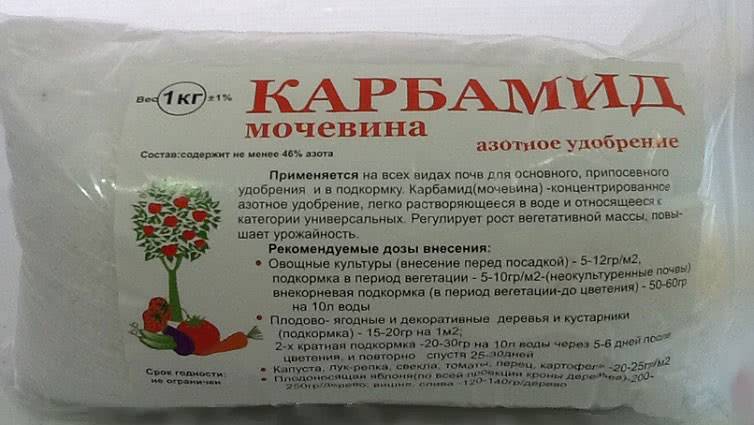
Characteristics and benefits of liquid urea
Outwardly, the fertilizer looks like light, slightly transparent granules that dissolve easily in water. This form helps to preserve the beneficial properties of the drug during transportation and gives the fertilizer an easy-to-use crumbly consistency. In addition, the granular composition does not cake during storage.
This fertilizer has tangible advantages over other chemicals:
- High nitrogen content and fast dissolution in water.
- Urea decomposes slowly in the soil, providing a long-lasting effect.
- The percentage of nitrogen is not inferior to the indicators of sodium nitrate and ammonium sulfate.
- Urea acidifies the soil to a significantly lesser extent than ammonium sulfate;
- Unlike ammonium nitrate, carbamide is excellent for sandy and sandy loam soils;
- The fertilizer has good indicators of the rate of nitrification in the soil;
- The use of this type of top dressing significantly increases the yield in the irrigated area;
How to improve yields? We are constantly receiving letters in which amateur gardeners are worried that due to the cold summer this year there is a poor harvest of potatoes, tomatoes, cucumbers, and other vegetables. Last year we published TIPS on this matter. But, unfortunately, many did not listen, but some still applied. Here is a report from our reader, we want to advise plant growth biostimulants that will help increase the yield up to 50-70%.
We advise you to prepare in advance for the summer season, pay attention to this biological product. There are a lot of positive responses.
Read ...
Urea formula, granule appearance, production
In appearance, urea is a fertilizer similar to ammonium nitrate. Both fertilizers are granular, only odorless white urea, and saltpeter can have a shade of gray or pink. The urea formula is CH4N2O.
The method of obtaining makes it possible to understand what urea is and how it is made. Production begins with the fact that ammonia and carbon are exposed to a pressure of 200 atmospheres. Further, a mixture of both substances enters the compartment, where a liquid form of urea is obtained.
Garden, vegetable garden and flower garden tips
Planting corn seedlings in 2019 according to the lunar calendar
Cucumbers Courage reviews photo yield characteristics and reviews
Floribunda roses outdoor planting and care for beginners
Climbing up the granulation tower, the urea drops are torn off with a spray gun and fall down. During the fall, they manage to turn into dry fertilizer granules with a crystal lattice.
The substance is packed in plastic bags. It does not pick up moisture and can be transported under any conditions. The composition of urea is absolutely safe and does not require the use of additional means of protection.
When should you use top dressing?
The following signs serve as a signal to fertilize plants with nitrogen-containing compounds:
- The growth rate of trees and shrubs is greatly slowed down.
- The plant produces many new thin, lifeless shoots.
- The leaves are smaller than usual. The color of the leaves is yellowish.
- There are few flowers, and they are weak, do not open up to the end.
All the described symptoms indicate that the plant lacks nitrogen, and groundbait is required. Replenishment with a carbamide solution will solve these problems and return a healthy look to shrubs and trees.
Also, spraying with a solution of urea is used to increase the number of ovaries. To ensure the maximum number of flowers, during the flowering period, the plant must be treated with a weak urea solution from a sprayer. The solution is prepared in a proportion of 10 grams of urea per 1 liter of water.
Urea as a fertilizer for the garden
Like any other nitrogen-containing fertilizer, urea is essential for all plants. But most often trees and shrubs are treated with it. Nitrogen directly affects the growth rate of fruits - berries and fruits. If this element is not enough, then the green mass will be processed less than necessary. The plant also does not develop in height, the fruits become smaller, the color of the leaves is less pronounced.
Plants can get nitrogen from air and soil. But often its concentration in such cases is too low, and additional application to the soil and treatment of the garden with urea is recommended. When the compound enters the ground, it turns into ammonium carbonate in the course of chemical reactions in a few days. There is an important element in this reaction - the vital activity of soil bacteria, which makes such a process possible.
The new compound will be easily taken up from the soil by the plants, without any side effects. At the same time, the treatment of trees and shrubs with urea will prevent the development of infectious diseases and the attack of insect pests.
In what cases does the use of urea not make sense?
Despite the positive characteristics, the use of urea does not always bring the expected effect. It is important to avoid direct contact of large doses of fertilizer with the plant root system. When using the preparation for feeding crops with one taproot, its suppression can lead to the death of the entire plant. To eliminate the negative effect on the roots, it is enough to treat the root zone at the point of contact with urea with potassium fertilizers, which neutralize the side effect.
Fight against diseases and pests with urea
Urea from the Colorado potato beetle is also beneficial, as well as from other pests:
· Nematodes and caterpillars;
· Repnits and aphids.
Spraying is carried out in the spring, but before the inflorescences appear. The solution is made for one liter of water. You can add no more than 70 g.
Literally everything is subject to spraying: branches, trunk, leaves, shoots, bark. Such treatment ensures the destruction of larvae and adults. Saves from the spread of diseases. Including scab and anthracnose. Prevention of insects and diseases is carried out in the fall.
Top dressing of vegetable and fruit crops
The use of urea gives good results when used as a means of feeding fruit plants and vegetable crops. In order to increase productivity and accelerate plant growth, fertilizing is carried out during the growing season by irrigating the root zone. The solution should be poured directly under the root of a tree or shrub. So it will be easier for the plant to assimilate nutrients.
Foliar dressing is carried out using manual spraying. It is better to carry out the procedure in the morning or in the evening. A solution of urea with a concentration of less than 5 percent is safe for the leaves, unlike ammonium nitrate.
Harm to humans
In order to avoid poisoning and allergic reactions, use in the garden and garden implies mandatory compliance with safety precautions:
- carry out the treatment of the site with the help of protective equipment: rubber gloves and a mask;
- after contact with the skin, wash the area thoroughly with soap and rinse with running water;
- ingestion of human food and animal feed is unacceptable;
- store in a dry place, in sealed containers, out of the reach of children.
An excess of urea accumulates in leaves, berries and fruits. This can negatively affect your health. This can manifest itself as mild malaise or an acute reaction of the body, up to and including death. This is especially true for people with allergic reactions, weakened immunity and young children.
It is advisable to adhere to the manufacturer's recommendations indicated on the packaging when using it on your personal plot. Do not allow the fertilizer to get on the mucous membrane or in the respiratory and nutritional organs.
A short helpful video:
How to prepare the solution?
Root feeding is done using a concentrated urea solution, which is applied directly to the root zone of the plant. It is imperative to follow the instructions and to observe the dilution ratios for the urea. So, to feed an apple tree, 200 grams of granules, diluted in 10 liters of water, will be required for each adult tree. For plums, cherries or irgi, 120 grams per 10 liters of water is enough.
To prepare a solution for foliar irrigation, use 50-100 grams of urea per 10 liter volume of water.
Root feeding with urea
Root dressing is carried out by introducing granules or liquid fertilizer solutions into the soil.Dry granules are embedded in the soil to a depth of 10 centimeters. The required dosage is 50 to 100 grams per 10 square meters. The earth is watered to quickly dissolve urea.
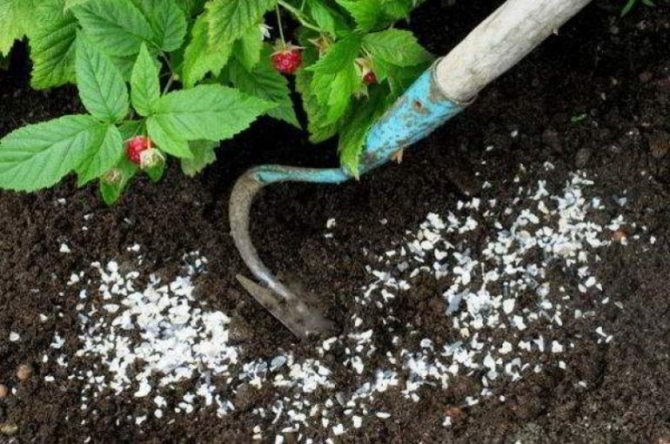

A liquid solution of carbamide is prepared strictly adhering to the norm. Dissolve 50 grams of the drug in 10 liters of water. A groove is made around the bush, into which 25-30 milliliters of the resulting fertilizer is poured.
Pest control
With the onset of spring and warm days, various garden pests wake up: weevil, aphid, copperhead. They can cause serious damage to garden plants. The use of expensive drugs does not always give a high-quality result. In addition, many insect repellents harm the plants themselves.
Spraying the garden with urea
Liquid urea is an affordable and safe way to control pests. With its help, you can not only eliminate insects, but also feed the plant with the necessary nutrients. Thus, pest control is combined with care for the harvest.
To prepare a solution for treatment, stir 50-70 grams of top dressing in one liter of water and carefully spray the plant with a sprayer. Spraying should be done when warming has already begun, but the buds of the plants have not yet blossomed. Such prevention will help get rid of hibernating pests. Important: do not make the solution too concentrated. It can burn the leaves.
Urea also helps in the fight against infectious plant diseases such as scab and purple spot. To get rid of the disease, you need to wait until the leaves begin to fall off the plant. With the arrival of leaf fall, the plant itself, as well as the foliage lying at its foot, are treated with a concentrated solution of urea. So you can not only get rid of the infection. But additionally fertilize the soil before wintering.
Urea - dosages for various crops
For spraying, you can use special garden spray guns with a pump. Urea dissolved in water does not harm the foliage, so you don't have to worry about burning it. The standard dosage for creating a urea solution for foliar feeding of vegetable, berry and fruit crops involves diluting 10-15 g of the product in 10 liters of water.
It should be borne in mind that for herbaceous crops you need to make a less strong composition, for trees or bushes a more saturated one is suitable. For large trees (pears, apple trees, quince, peaches), which are more than 4-5 years old, you can take 200 g per 10 liters of water. Apricots, plums, cherries or cherries will need about 120 g per 10 liters.
An approximate calculation of doses for certain garden representatives looks like this:
1. Cucumbers, beans, peas and other legumes - from 6 to 9 g per 1 m².
2. Tomatoes, carrots, beets, radishes, potatoes, onions, garlic, peppers and various types of cabbage - from 18 to 25 g per 1 m².
3. Eggplants, squash, any kind of zucchini - from 10 to 12 g per 1 m².
4. Strawberries, raspberries, strawberries - from 50 to 70 g per 10 liters of water (at the end of summer).
5. Fruit trees, shrubs - from 5 to 12 g per 1 m².
For example: 1 tablespoon equals 10 g of carbamide, and a matchbox holds 15 g. 140 g of product is placed in a standard faceted glass. Remember that dry fertilizer is applied to the soil either when planting plants, or during spring / autumn digging. For other cases, only an aqueous solution is used.
Pros and cons of urea
The positive properties of this type of fertilizer include:
- The nitrogen contained in urea is easily absorbed by plants;
- A significant advantage of urea compared to other fertilizers is that it does not cause leaf burns;
- The urea solution can be used both for soil treatment and for the plant itself;
- Urea does not contain ammonia, so it can be sprayed onto the soil surface.
The main disadvantage of urea is unsatisfactory application results at low values of urease in the soil. In such cases, additional application of organic fertilizers is required to achieve the desired result. Urea is extremely sensitive to storage conditions. Absolute dryness is needed at the location of the fertilizer, because it easily absorbs moisture and dissolves in water.
Liquid urea is an affordable fertilizer that has a very wide range of uses. With its help, you can not only enrich the soil with nitrogen, but also increase the number of ovaries and get rid of pests. When used correctly, this type of top dressing ensures good growth for both horticultural and horticultural crops and guarantees a good harvest.
Have you ever experienced unbearable joint pain? And you know firsthand what it is:
- inability to move easily and comfortably;
- discomfort when going up and down stairs;
- unpleasant crunching, clicking not on their own;
- pain during or after exercise;
- joint inflammation and swelling;
- unreasonable and sometimes unbearable aching pain in the joints ...
Now answer the question: does this suit you? How can you endure such pain? And how much money have you already "poured" on ineffective treatment? That's right - it's time to end it! Do you agree? That is why we decided to publish an exclusive interview with Oleg Gazmanov, in which he revealed the secrets of getting rid of joint pain, arthritis and arthrosis.
Attention, only TODAY!
Carbamide, or urea, is the most famous nitrogen fertilizer. It can be used everywhere: at home, in the garden, in the greenhouse and in the vegetable garden. Urea is highly efficient, low cost, and can be bought at any garden store
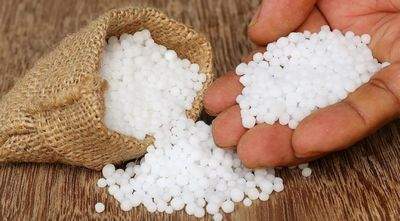

How to apply urea correctly
Urea can be used for feeding any crops: decorative, fruit, vegetable. The fertilizer contains ammonium nitrogen, which, rather than inorganic nitrogen salts, is absorbed in plant tissues, is intensively used in biochemical processes, and therefore its use is more effective than other nitrogen fertilizers.
When applied to the soil, carbamide granules should be immediately embedded in the soil to a depth of 3-4 cm. In soils with a high biological
activity, urea turns into ammonium carbonate in 2-3 days, and this compound easily decomposes in air to gaseous ammonia, that is, part of the nitrogen simply evaporates. Therefore, the surface application of urea without incorporation into the soil is ineffective.
Do I need to make urea for planting vegetable and berry crops
Before planting, the granules are dug up together with the soil at the rate of 5-10 g / m². However, gaseous ammonia, released, can damage young shoots. Therefore, it is better to add urea for sowing in advance, 1-2 weeks before sowing. The negative effect of ammonia on young shoots can be almost completely neutralized by using potash fertilizers. At the same time, the efficiency of fertilizers will increase.
Feeding perennials with urea
For feeding perennial flowers during the growth period, use 20-30 g of carbamide per 10 liters of water. Watering is carried out at the rate of 1 liter per adult plant.
Top dressing of trees and shrubs with urea
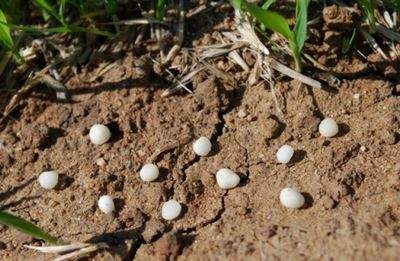

Fruit and berry and ornamental trees and shrubs are fed once or twice a season. Urea is applied along the entire projection of the crown, scattering over the surface before watering. When using organic fertilizers, the dose of urea is reduced by one third or even half. On average, 150 to 250 g are applied under an adult fruiting apple or pear, 100–140 g under a plum, 30–40 g under a currant.
Fertilizing vegetable crops: when used dry - 5–20 g per 1 m².
For cucumbers and peas, apply no more than 5–8 g / m² of dry urea,
apply for squash and squash - 10-15 g / m² of urea,
for tomatoes and peppers - up to 20 g / m² of urea.
For watering vegetable crops, you can prepare a solution: 20 g of carbamide per 10 liters of water. Watered at the rate of 1 liter of the finished solution per plant.
Foliar top dressing with urea
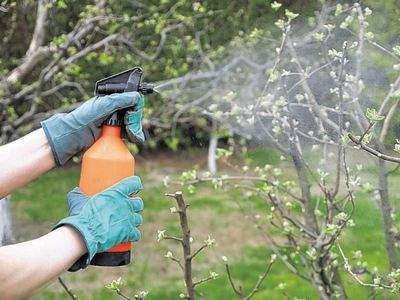

With signs of nitrogen starvation in plants, as well as in the case of shedding of ovaries, it is useful to carry out foliar feeding with urea. Urea has an advantage over nitrate and other nitrogen fertilizers: it burns less plant leaves. Consumption of urea solution for foliar feeding is about 3 liters of working solution per 100 m².
The crowns of fruit trees are sprayed at a concentration of not more than 0.5% (50 g of urea per 10 l of water). It is desirable that the urea solution in a fine droplet state falls on both the upper and lower sides of the sheet, evenly wetting it.
For indoor plants, a solution of urea for foliar feeding is prepared at the rate of 5–8 g of carbamide per 1 liter of water. If the plants have very pale leaves (which indicates a nitrogen deficiency), then 3 g of magnesium sulfate (magnesium sulfate) must be added to 1 liter of solution. The use of magnesium sulfate will reduce the risk of burns and increase the effectiveness of feeding, since magnesium is part of the chlorophyll.
Foliar dressing is carried out in the morning or evening.
Urea as a plant protection agent
Urea can also be used for pest and disease control. At the onset of the first warm spring days (the average daily air temperature is +5 ° C and above), before the buds swell, a concentrated urea solution (500-700 g of urea and 50 g of copper sulfate per 10 liters of water) is used to spray fruit trees from pests, as well as from scab and other diseases.
Early spring spraying helps to delay flowering and reduces the likelihood of damage to flowers by spring frosts in thermophilic crops (cherry plum, apricot, and others).
To protect apple trees from scab and other infectious diseases, trees can be sprayed with a solution (500 g of urea per 10 liters of water) in the fall, at the beginning of leaf fall.
Basic rules for the use of urea (urea) in the garden and vegetable garden
- In the open air, ammonia evaporates. To avoid its loss, fertilizer should be embedded in the soil to a depth of at least 3-4 cm.
- There must be a layer of soil between the urea granules and freshly sown seeds. It is better to use urea in conjunction with potash fertilizer.
- Urea can be mixed with other fertilizers only if they are dry, and only before sieving, as it increases the hygroscopicity of the mixture. Do not mix urea with simple superphosphate, lime, dolomite and chalk.
- A solution of urea with foliar dressing does not burn the leaves (5–10 g per 1 liter of water), unlike ammonium nitrate. Already 48 hours after spraying with urea, nitrogen is found in the composition of plant protein.
- Store unused fertilizer granules in a dry place, as urea absorbs moisture well.
INFORMATION ABOUT THE PREPARATION
Urea, or urea... - a chemical compound that is carbonic acid amide CO (NO2) 2. This is an organic compound, but it is customary to refer to it as mineral nitrogen fertilizers.
The appearance of urea. Represents odorless colorless crystals. The finished product looks like round granules of white, grayish or slightly yellow color.
Urea composition. This is the most concentrated nitrogen fertilizer: pure urea contains about 46.2% nitrogen!
Properties of urea. Well soluble in water, solubility increases with increasing temperature. In an aqueous solution, urea is hydrolyzed with the formation of ammonia and carbon dioxide, which leads to its use as a mineral fertilizer.
The use of urea. It is used for root and foliar dressing, as well as for pest and disease control.
Similar
Urea - as a means of protecting plants from diseases
Urea can also be used for pest and disease control.
At the onset of the first warm spring days (the average daily air temperature is +5 ° C and above), before the buds swell, a concentrated urea solution (500-700 g of urea and 50 g of copper sulfate per 10 liters of water) is used to spray fruit trees from pests, as well as from scab and other diseases.
Early spring spraying helps to delay flowering and reduces the likelihood of damage to flowers by spring frosts in thermophilic crops (cherry plum, apricot, and others).
In autumn, at the end of leaf fall (late October - early November), to protect apple trees from scab and other infectious diseases, spray the trees with a solution (500 g of urea per 10 liters of water). In principle, prophylactic treatment of trees with a urea solution can be continued during all days when the air temperature is +5 ° C and above. It is also useful to process fallen leaves. On young trees, before treatment, carry out a test spraying in advance and make sure that the concentration of the urea solution does not harm the bark, does not leave burns on it. In trees older than 6-10 years, carefully clean out the places of exfoliation of the old bark, heal the cracks and close up the hollows.
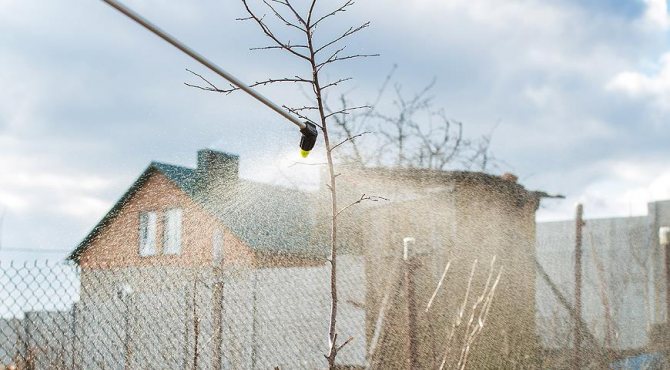

In the photo: Treatment of plants with urea solution
Urea (carbamide) - nitrogen fertilizer
Today, the cultivation of garden, flower and horticultural crops is accompanied by the use of fertilizers.
Carbamide (urea) is a fertilizer that occupies a leading place among many nitrogen fertilizers used in agriculture. This organic compound contains nitrogen. It is mainly produced in the form of granules of white or yellow-gray color, however, recently, production has been established in the form of tablets, with a coating that ensures long dissolution in the soil.
Positive properties
Fertilizer is widely used due to its many advantages:
- When it enters the soil, the substance dissolves rather slowly, therefore, excessive accumulation of nitrates in the fruits is excluded.
- Favorably affects the growth of vegetative mass of vegetation;
- Increases the protein content in grains;
- Fertilizer helps to increase yields;
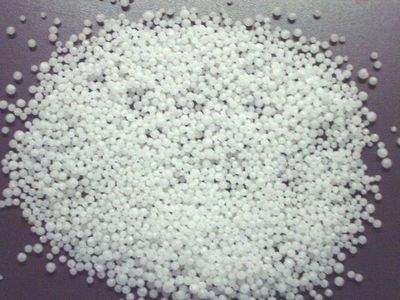

Application features
Due to the fact that ammonium carbonate is actively decomposed in air, the surface application of urea is considered ineffective. This fertilizer, when applied to the soil, is recommended to be plowed immediately to prevent the loss of gaseous ammonia.
The use of urea is associated with an acidifying effect on the soil; therefore, liming of the soil is recommended to neutralize the acid.
Urea fertilizer, along with its advantages, has some peculiarities in its application. So, in the process of dissolution of a substance, an endometric reaction occurs, which causes a decrease in the temperature of the solution. For example, dissolving 20 kg of urea in 100 l of water, the temperature of the solution decreases by 9 ° C. When processing plants with such a solution, hypothermia may occur, which will cause stress for them, since the difference between the temperature of the working solution and the air should be no more than 10-12 ° C.
Application rates
Urea # 8212; a universal fertilizer, used for feeding various crops throughout the growing season.
- Vegetable, berry crops - 5-12 g / m2
- Fruit trees (brought into the tree trunk circles): apple -200 g; cherry, plum - 120 g.
- As a top dressing - 20-30 g / 10 l of water.
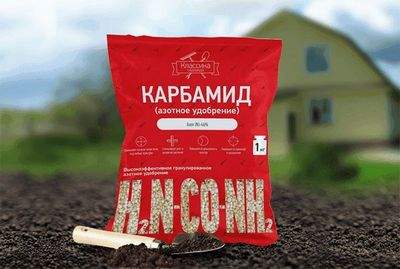

Dear visitors, please save this article on social networks. We publish very useful articles that will help you in your business. Share! Click!
Foliar dressing
With nitrogen starvation of plants, which is externally manifested by shedding of the ovary of fruits and unripe berries, spraying (foliar feeding) with carbamide is carried out.
In comparison with other nitrogen fertilizers, carbamide (urea) compares favorably with the fact that it does not cause burns that can occur on the surface of foliage, for example, when treated with ammonium nitrate solution.
- Fertilizing vegetable crops - 50-60 g - 10 liters of water;
- Fruit and berry plants - 20-30 g - 10 liters of water;
Plant protection product
Urea is used as an effective means of combating various diseases and insect pests.
- Spring treatment (until the kidneys swell). A solution of urea is used to combat wintering insects: weevils, aphids, honeydew, etc.
- Autumn processing (the initial period of leaf fall). The foliage of fruit-bearing trees and berry bushes is treated with a solution of urea against purple spot and scab.
Interesting to know # 8212; urea production technology
When processing is carried out
The timing of the procedure depends on the climatic conditions of the region. In the spring, for example, you need to focus on the beginning of flowering trees. In the fall, procedures are tied to leaf fall. Regardless of this, spraying is carried out 2 times a year.
Spring processing
Early spring spraying of the garden can be done immediately after thawing. But often the procedure is carried out during flowering or immediately after it.
Much depends on the situation. So, the thicker the foliage on the trees, the earlier all procedures should be completed. For example, if there are young leaves on pears and plums, processing can be carried out even in late spring or early summer.
Early spraying has its advantages, since it is an effective preventive measure against various pests and at the same time protects young shoots from freezing.
Autumn processing
When spraying fruit trees in autumn, it is important to ensure that the urea solution falls evenly over the entire surface of the crown, the area of soil in the near-stem circle. This will help protect plants, increase their immunity so that they can survive the winter, neutralize potential foci of infectious diseases.
The procedure is usually performed after the leaves fall. If the plant has signs of a disease, then the trunks and fallen leaves are additionally sprayed, increasing the standard concentration of the solution. The optimal time for the procedure in most regions is mid-November, and in some the end of the month. Earlier processing will only lead to leaf burns, and frost resistance will decrease.
Urea: features of fertilizer and its application
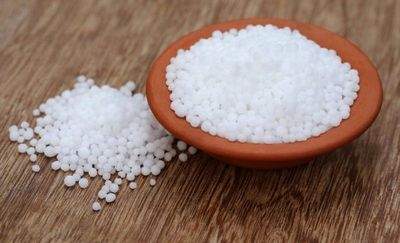

Urea is a fertilizer popular with summer residents. What it is for and how to use it correctly - read our article.
Urea (or urea) is a granular fertilizer that contains 46% nitrogen. Thus, it is the most concentrated nitrogen fertilizer applied for horticultural crops. The substance is odorless and readily soluble in water. But the fertilizer itself does not absorb moisture well, therefore it is stored for a rather long time. To understand how much it is necessary in a summer cottage, you need to know to what extent nitrogen is valuable for plants.
Pros and cons of feeding plants with urea
Positive properties of urea:
- the urea solution is rather quickly absorbed by crops sensitive to high pH values of the soil;
- foliar feeding does not cause burns of leaf plates in plants;
- urea solution helps to fight pests of the garden and vegetable garden, as well as pathogens;
- feeding with urea allows you to increase the yield of garden and garden plants.
Cons of urea feeding:
- urea can reduce the germination of seeds with its increased concentration in the soil;
- fertilizer requires careful storage;
- urea cannot be mixed with other fertilizers.
How urea works
Once in the soil, urea reacts with the enzymes and bacteria in the soil. During the first 2-3 days, a chemical reaction occurs that converts the carbamide to ammonium carbonate. On contact with air, the latter is transformed into gaseous ammonia.
Therefore, if urea is not embedded in the soil, some of the fertilizer will simply be lost. If the soil is alkaline or with a neutral reaction, then the losses can be very significant. This means that the effect of adding urea will be insignificant. Therefore, the urea granules scattered around the plants must be embedded in the soil to a depth of 7-8 cm.
Instructions for the use of urea fertilizer
When feeding crops with urea, it must be remembered that this fertilizer stimulates the development of the vegetative part, therefore, its introduction during the laying of buds can lead to a decrease in yield. It is best to apply urea under the plants at the time of the formation of the green mass.
The introduction of urea in autumn does not always give the desired effect, since by this time microorganisms begin to decompose, and the released ammonium is rapidly destroyed. In addition, by spring, part of the nitrogen sinks into the deeper layers of the soil, from where plants can no longer consume it. The use of urea in the fall is justified only if the soil on the site is sandy or sandy loam, and the weather is not too warm and dry.
You can also apply urea to the soil before planting or sowing plants directly into the grooves and holes. In this case, it is important to sprinkle the fertilizer with a small layer of soil in order to avoid contact of urea with the planting and seed material.
Urea application rates for flowers, garden plants and strawberries
Urea is a fertilizer that can be applied to a wide variety of soil types. However, it manifests itself most effectively on wet soils. Urea can be applied as a top dressing even in protected ground conditions.
Urea should not be mixed with other substances and preparations (especially with lime, chalk, dolomite flour or superphosphate).
Foliar feeding with urea
Foliar feeding of plants is indicated for crops during nitrogen starvation and shedding of ovaries. It consists in spraying the green mass with a urea solution. To prepare the solution, you need to dissolve 5-10 g of the drug in 1 liter of water. This amount should be enough to process 20 square meters of beds. It is necessary to carry out such feeding in the morning or evening.
During the growing season, fertilizing with urea should be carried out in such a way that there are 3 liters of solution per 100 square meters. In this case, vegetables need to be fed with a composition prepared at the rate of 50-60 g of fertilizer per 10 liters of water. For fruit and berry crops, the solution is prepared at the rate of 20-30 g per 10 liters of water.
Signs of a lack and excess of nitrogen
Nitrogen is responsible for the growth of stems and leaves. This gas is involved in the formation of chlorophyll, which is so essential for plant photosynthesis. If nitrogen is enough for garden or horticultural crops, then their foliage will have a rich emerald color and shine with gloss. Lack of nitrogen is characterized by yellowing foliage and slow growth of shoots.
In addition, nitrogen is responsible for the amount of the crop: the stronger and stronger the plant becomes, the more flower buds it can form.
Before adding urea to the soil, you need to find out how much nitrogen is needed for plants.
Signs of a nitrogen deficiency:
- plants are depressed and develop slowly;
- leaves grow small and narrow, pale in color or with a yellowish tinge;
- leaf plates fall off prematurely;
- young shoots of fruit and berry crops are weak, thin and without leaves;
- shoots weakly branch;
- fewer buds are laid on the plant than usual.
Signs of excess nitrogen:
- inhibited plant development in the early stages of growth;
- violent growth of green mass in adult crops;
- large foliage of dark color;
- the growing season is noticeably prolonged, the ripening of the fruits is shifted to a later date.
Urea against diseases and pests
In addition to being essential as a yield-enhancing fertilizer, urea can help fight pests and diseases. For example, with the onset of stable warming in suburban areas, weevils, copperheads, aphids and other insects that harm plantings become more active. To combat them, you can use a urea solution prepared from 500-700 dry fertilizer granules and 10 liters of water. With this agent it is necessary to spray the plants that have been attacked.
With the help of urea, you can also defeat some diseases, such as purple spot or scab on fruit-bearing trees and shrubs. A highly concentrated urea solution is also used to treat plants, as is the case with pests. They should be sprayed with plants in the fall after the foliage has fallen. Such treatment will protect the garden from diseases next year, as well as fertilize the soil.
Urea is a fertilizer that must be in the household of a gardener or gardener. After all, it not only helps to support plants during growth and fruiting, but also solves other problems that may arise during their cultivation.
Sources:
4 May 2017
ditim
Urea - mineral fertilizer popular among summer residents. The nitrogen content in it ranges from 40 to 46 percent, which is significantly higher than in ammonium nitrate and ammonium sulfate. Urea (the second name of the fertilizer) is capable of acidifying the soil, so it is advisable to use it on non-acidic soils. Urea granules scattered dry under the plants, and then embedded in the ground, or bred for preparation of liquid top dressing.
On the label, manufacturers, as a rule, indicate the rates of fertilization for various crops:
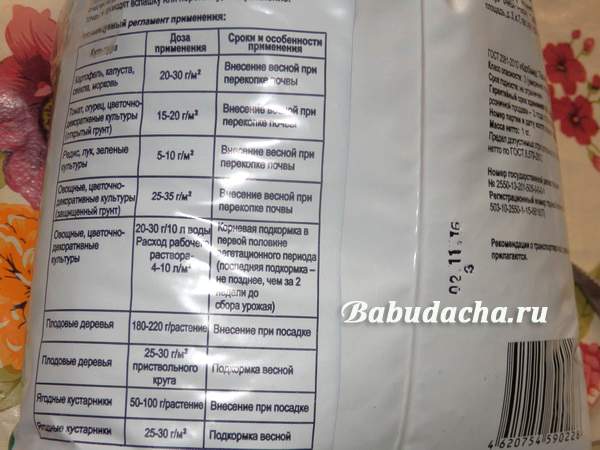

How urea works
The first 3 days after the fertilizer enters the soil is the transformation of the composition of urea. Thanks to enzymes and bacteria, soils receive ammonium carbonate. Contact with air transforms the substance into ammonia gas.
It is not enough to apply fertilizer to the ground, it must be sealed deeper, otherwise part of the composition will be lost, especially on alkaline or neutral soils.
To avoid reducing the effect of the use of urea, the embedding depth of the Urea fertilizer granules should be at least 8 cm. It is not recommended to process the plants during the budding period.
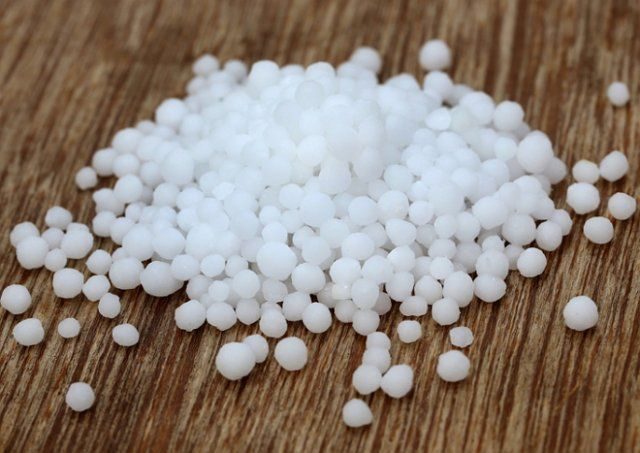

What can be fertilized with urea?
So, in the spring, when digging the soil, urea is applied under:
- potatoes, cabbage, beets, carrots in the amount of 20-30 g per 1 square meter,
- tomatoes, cucumbers, flower and ornamental crops in the open field in the amount of 15-20 g per 1 square meter,
- radishes, onions, green crops in the amount of 5-10 g per 1 square meter,
- vegetable and flower-ornamental crops in greenhouses in the amount of 25-35 g per 1 square meter.
When planting fruit trees and berry bushes, carbamide is put in the amount:
- 180-220 g per 1 plant (fruit trees),
- 50-100 g per 1 plant (berry bushes).
Fruit trees and berry bushes in the spring are fed with urea in the amount of:
- 25-30 g per 1 square meter of trunk circle (fruit trees),
- 25-30 g per 1 square meter (berry bushes).
And, finally, liquid root fertilizing with urea is made for vegetable and flower-ornamental crops. For this, a solution is prepared, and urea is diluted in this proportion:
- 20-30 g urea per 10 liter bucket of water
Solution consumption: 4-10 liters per 1 square meter.
Root dressing begins in the 1st half of the growing season, and ends 2 weeks before harvest.
Different crops have their own peculiarities of making top dressing with urea. We have touched on this topic in detail in the articles:
- "Top dressing with urea in spring"
- "What is fed with urea"
In these articles, slightly different dosages are given (sources - reference books and summer cottage literature).
How to Know When Plants Need Urea - Signs of Nitrogen Deficiency
The appearance of your green dwellers may indicate that it is time to use urea.
With a lack of nitrogen:
1. The plant grows very slowly, sluggish and weak in appearance.
2. Too thin stems and undeveloped (short) shoots.
3. Small, sparse foliage of a pale green-yellow hue.
4. Dropping leaves, sometimes much earlier than expected.
5. Buds (flowers, trees) develop poorly, their number decreases.
The above signs are a signal of a nitrogen deficiency. It is noteworthy that urea can be used to fertilize garden trees, berry bushes, as well as all the vegetables that you have in your garden. It is a truly versatile supplement that benefits all green crops equally.
How to prepare urea solution (how to dilute)?
Special wisdom in preparation of urea solution for liquid feeding no.
1 tablespoon holds 10-15 g of urea, and 1 matchbox holds 13-15 g. To feed vegetables and flowers in the first half of the growing season, we need 20-30 g per 10 liters of water. So, we scoop up 2 tablespoons or 2 matchboxes of fertilizer and put them in a 10-liter bucket of water, mix thoroughly. If you need a minimum dose, then we take 1.5 spoons or a box.
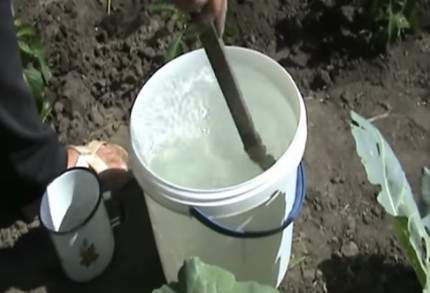

Urea granules dissolve well in water, so you can start feeding immediately after preparing the solution.
Fruit tree processing
The processing of fruit trees is carried out only after the removal of dead branches and the destruction of pests that have settled in the cracks in the bark. It is best to carry out the procedure early in the morning or in the evening to avoid sunburn.
Root top dressing can be carried out simultaneously with spraying. If a urea solution is used for this, then its concentration is 120-150 g per bucket of water for plums and cherries, and almost twice as much for apple trees.
If organic fertilizers have already been applied to the soil, fertilizing with urea can be carried out, but its amount should be reduced by 2-3 times.
Urea - What kind of fertilizer is it, what is it for?
Among the variety of fertilizers for the garden and vegetable garden, used both in spring and in autumn, Urea or urea is widely known. This fertilizer is in the form of white granules, containing 46% nitrogen. Urea is the richest nitrogenous fertilizer, has good solubility and is distinguished by the absence of any odor. As the temperature rises, it increases the property of solubility. It is easy to assess the importance of the use of carbamide in horticulture and horticulture, knowing the importance of nitrogen fertilization for all types of plants.
Urea fertilizer is used for:
- activation of growth,
- obtaining bountiful harvests,
- keeping plants healthy.
Urea is a good helper in the garden and vegetable garden. Thanks to this approval, the plants gain color well, have a bright green color, and bring a rich harvest.
It is worth taking more seriously the treatment of soil and plants with urea. Lack of nitrogen leads the plant to a depressing state, the appearance of barren flowers, respectively, to a poor harvest. Some plant species can simply die due to a lack of nitrogen. It is also important not to overdo it with urea fertilization. An excess of nitrogen also negatively affects the development of the plant. It is worth carefully reading the dosage of carbamide for each type of plant.


Plants for home
Every florist knows that plants should be helped to grow healthy, strong. However, urea fertilization is not the best option. Undoubtedly, indoor plants are in need of an abundant supply of nitrogen to a large extent. Only he is able to give strength to life.It is important to consider the fact that the use of highly concentrated urea can cause serious damage to vegetation.
It is worth explaining. Urea copes well with the increase in foliage growth, gives it juiciness, splendor. However, plants that are rich in flowering are best protected from urea treatment.
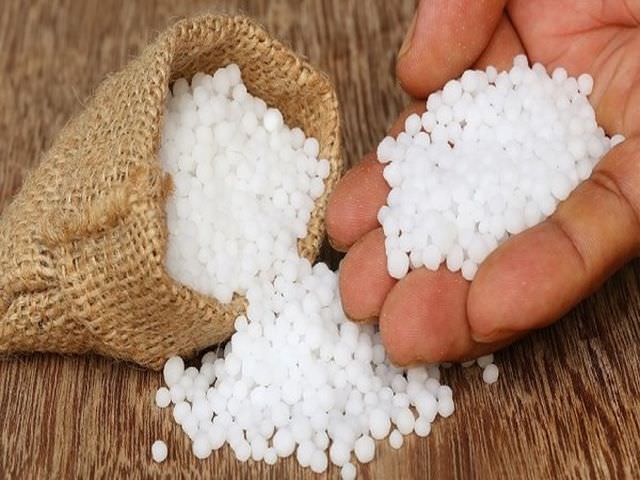

Nitrogen is not so important to flowers for active growth. Hence, it follows that its abundant presence leads to a slower development of plant growth, an increase in the time interval for the formation of buds.
Today, there are three types of indoor plants that need nitrogen:
- bulbous type (hippeastrum, hyacinths and others);
- woody type (lemon, ficus, orange and others);
- rhizome type (calla lilies, irises and others).
It is for them that urea is absolutely harmless, so you can resort to using it from the first day of the plant's life.
A separate point worth noting is the tuberous type (gloriosa, caladium and others), which, like the previous species, needs an abundant intake of nitrogen. However, it is endowed with one distinctive characteristic. Urea fertilization should only take place at the moment when the plant sprouts the first leaf seedlings.
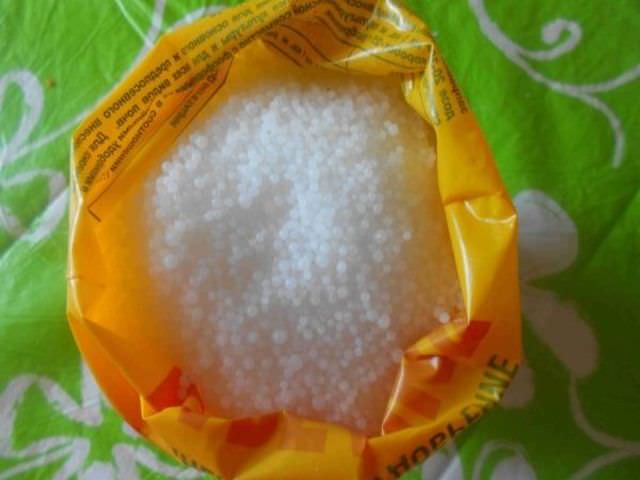

It is preferable to use urea in a liquid solution. For 10 liters of boiled water, it is enough to add 20 grams of the product. The volume of the resulting preparation is enough to process 10 square meters of the total area of domestic plants.
Synthesis of urea
Before delving into agrochemistry, let's briefly consider the main method of synthesis - direct: from carbon dioxide and ammonia.


The synthesis of carbon dioxide and ammonia is two-stage:
- The reagents are combined and ammonium carbamate is formed:
2NH3 + CO2 - NH2 - CO - ONH4 + 38000 cal
- Ammonium carbamate is converted to urea, splitting off water:
NH2 - CO - ONH4 - NH2CONH2 + H2) - 6800 cal
The main condition for carrying out the synthesis process is the presence of ammonium carbamate in the liquid phase (temp. Pl. 145 * -150 *), otherwise the synthesis in the solid phase proceeds very slowly.
Signs of nitrogen starvation in plants
Whether or not plants have a nitrogen deficiency can be recognized by dropping, slowing growth and loss of color brightness. Another sign is early blooming, poor harvest. Similar symptoms can occur due to a lack of water and some other nutrients. Characteristic features of nitrogen deficiency: there will be no wilting, and if there is little water and fertilizer, then it will occur during the day. It will touch the veins of old leaves first, while the natural aging process starts from the plate. With a lack of iron, it will begin with young leaves.
Acute lack of urea will provoke an unnaturally rapid ripening with a low yield and loss of foliage. This problem is observed on podzolic soils, red and gray soils, as well as sandstones, eroded and soils with high acidity or alkalinity.
Urea and other fertilizers
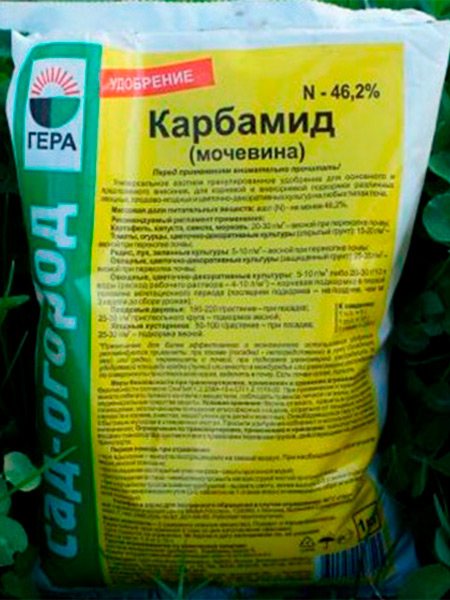

Urea belongs to mono-additives, so it is often combined with other dressings. But to obtain the result, only those compositions are used that are compatible with each other:
- mullein (rotted manure);
- sodium nitrate;
- potassium sulfate.
At the same time, it is forbidden to add simultaneously urea and superphosphate, dolomite flour, wood ash, calcium nitrate. When mixed with alkaline additives, ammonia is released, and the necessary nitrogen disappears.
In addition to urea, gardeners use ammonium nitrate (the second name is ammonium nitrate) as mineral nitrogen additives. Their composition is similar, but the methods of introduction and application are different.
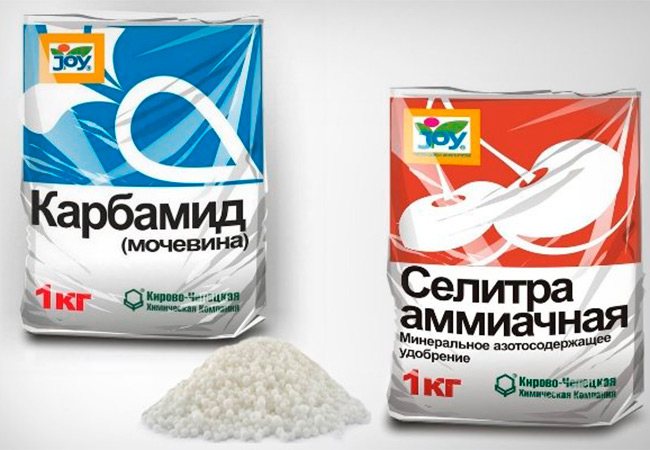

| Comparison criteria | Ammonium nitrate | Urea |
| Nitrogen content | 35% | 46% |
| Effectiveness | Rapid nitrogen saturation, long-term preservation of nutrients in the soil | Long period, with irrigation and precipitation, it is quickly washed out of the soil |
| Mode of application | Foliar spraying, root dressing | Introduced only into the soil |
| Storage conditions | There are no special conditions for storage, except for the exclusion of moisture (the granules are saturated with moisture) | Refers to explosive compositions, special storage conditions are required |
| Safety | Safe to use | If the rules are not followed, there may be a chemical burn (on plant leaves, in humans) |
Urea and urea: are they the same thing or not?
In fact, these are two names of one fertilizer. At first, it was synthesized from cattle urine by evaporation, the resulting substance was called urea.
Urea is the scientific name for a chemical compound that is currently being produced.
Fertilizer is a small white granules that dissolve well in warm water.
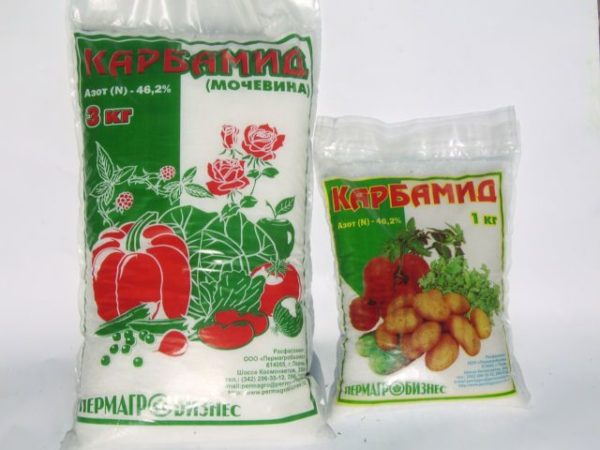

Urea and urea are one and the same
How to store fertilizer
The instructions for use of the drug say that urea is stored for no more than 6 months, however, having created the appropriate conditions, this substance can be stored indefinitely.
If the fertilizer bag has not been completely used, then it should be closed tightly. Or the drug is poured into a plastic container with a tight-fitting lid. The package with urea should be stored in a dry room, since the granules of the drug are hygroscopic and quickly absorb moisture. In this case, the quality of urea deteriorates sharply, such a substance will be useless in the future.
What is the difference between urea and ammonium nitrate
The main common quality in urea and ammonium nitrate is the presence of nitrogen in the composition of these two chemicals.
This is where their common features end.


The main differences between urea and nitrate:
- the composition of urea contains 45% of nitrogen, and only 35% of nitrate;
- the first preparation can be used for top dressing "on the leaf" and "at the root", and the second - only for introduction into the soil;
- urea is a more organic feed, so it retains its nutritional effect longer than saltpeter;
- ammonium nitrate contributes to a greater increase in the acidity of the soil, therefore, in areas with an acidic reaction, it is more advisable to use urea as a top dressing;
- saltpeter is an explosive substance, therefore, special precautions must be taken when storing it, and urea must be protected only from high air humidity.
Differences between urea and nitrate - video
Forms of issue
Urea is produced under the grades A and B. Grade A is needed for industrial purposes, and grade B is used as a fertilizer. Most of the urea is produced in the form of white granules with a grayish-yellowish tinge, but recently tableted fertilizers have appeared on the market.
Urea tablets are more effective because their coating prevents nitrogen from rapidly evaporating during decomposition. The proportions of urea application in granules and tablets are different, usually tablets are required less, but their cost is higher.
Advantages and Disadvantages of Urea
Urea is a fertilizer that has found application in many branches of horticulture - decorative, horticultural, and also as an insecticide. It has more advantages than disadvantages, because it is a mineral fertilizer with an organic base, which means that plants will absorb urea faster than any other fertilizer.
First, about the precautions:
- According to the rules for the production of high-quality composition, the content of biuret when it enters the soil should not exceed 1.6%. An excess of up to 3% is allowed if it is a second-class fertilizer.
When the biuret content exceeds 3%, it is necessary to introduce the granules into the soil in advance so that they have time to decompose and the excess ammonia evaporates. Otherwise, it can damage the plant roots. Growth will be suspended. It is desirable that there is a layer of soil between the roots and granules.
- It is undesirable to apply large doses to the root zone of plants that have one main root, such as beets.
Its dying off leads to the death of the entire plant. If the instructions for the use of urea fertilizer say that the substance is 2 or 3 grades, then you need to be careful and lay it in the soil 2 weeks before planting the plants.
- It is preferable to add a full complex at once - a nitrogen-phosphorus-potassium composition. In our experience, this leads to more active germination of seeds, and also reduces the possibility of an overdose of nitrogen fertilization.


Now about the advantages:
- The urea solution can be applied at any time - before sowing, during agricultural work and in the fall. When laying in the ground in autumn, the amide form of nitrogen granules does not undergo leaching and remains in the soil until spring.
- Foliar applications are possible at any time for emergency feeding if symptoms of chlorosis appear on the leaves of the crops. A solution in a concentration of less than 5% is safe for green mass, but it should be carried out in the morning or evening, when the sun has already gone down.
- With a sufficient content in the soil of the enzyme urease (a waste product of microorganisms), urea is completely decomposed. Can be used with organic fertilizers to improve soil fertility.
- The greatest effect is observed on regularly irrigated areas.
- It has been proven that urea is a fertilizer that does not contribute to the accumulation of harmful substances in fruits.
- Easily soluble in water, providing a high degree of absorption.
It is important to know about urea, that it is a fertilizer that will not be beneficial if it is scattered over the snow. At low temperatures, soil microorganisms are inactive, therefore they will not be able to break down the substance.
Video: Urea - properties and uses
Spraying the garden with urea in autumn
Treating the garden with urea in the fall means that the trees and lawn are prepared for winter. This should be done either in October or November, when there is not a single leaf on the branches and there is no risk of damaging them. If the treatment of the garden with urea in the fall concerns apple trees, pears or plums, then these trees begin to be prepared from the end of September, immediately after the planned harvest.
Before spraying 6-year-old trees and older, lichens and old bark are first removed. Only then can you start processing the wood. Late spraying is desirable after the first frost; for this, all foliage and weeds are removed from the soil.
In the spring, after the winter "hibernation", it is also necessary to process trees. But in this situation, the main thing is to choose the spraying temperature. Experienced landowners and experts say that it is better to start the procedure when all the snow has melted and the air temperature is more than 5-7 degrees. This is usually mid-March when buds begin to form on the trees.
At this time, special attention should be paid to cracks in the bark, in which various harmful insects could find a home. The first thing to do is brush the trunk of the tree and then start spraying. The solution should be prepared on the same day when the garden will be processed. If you prepare a solution in a day, it will be ineffective, and the tree can get burns, because the urea contains ammonia.
Packaging, storage and transportation of urea
Initially, lawn fertilizer is packed in paper laminated bitumen bags, or in polyethylene or woven polymeric bags, with an insert or in soft containers for single use.
Urea fertilizer is transported in bulk in self-unloading special wagons, by road transport and on marine deck vessels. Products are packed here in transport bags, fastened together with a film, which makes it possible to transport in the open air.
Usually, urea is stored in closed warehouses, where it is protected from various precipitation. If the product is not stored in bags, but in bulk, then it must not be mixed with other fertilizers. The shelf life is 6 months from the date of production, and for retail trade it is 1.5 or 2 years.
Urea application for garden flowers
During the development of plants, urea can be successfully used for flowers, the nitrogen contained in it will contribute to active growth and a set of vegetative mass. Before applying urea for garden flowers, the soil should be well watered so that the nutrients are well absorbed from the fertilizer.
Plants that have already taken root and woke up after winter rest should be fed with this fertilizer. Cloudy weather is desirable for fertilizing, without the scorching sun. Young plants and flower seedlings should be fed with urea using a lower concentration of fertilizer. You can also carry out foliar feeding of flowers with a solution of urea for better growth, development and abundant flowering.
Garden, vegetable garden and flower garden tips
Planting cabbage seedlings in open ground according to the lunar calendar
Remedy for ticks for processing the site reviews
Dates of planting seedlings of tomatoes and peppers in open ground
Beneficial features
Fertilizer urea used in the garden has a number of advantages, ranging from economic benefits to benefits for plants. Unlike other nitrogen monofertilizers, it is much cheaper. Compared to ammonium nitrate, it is required 3 times less, and there are more opportunities for use, because saltpeter is used only for introduction into the soil, and urea - into the soil and by the foliar method.
In addition to increasing the yield, the solution has the following useful qualities:
- It is used to control pests of agricultural crops and fruit trees. It is applied by spraying on the leaves.
- When foliar method does not cause burning of leaves. Different concentrations are used for feeding and preventing diseases.
- It is quickly absorbed by plants, which makes the solution a fertilizer of paramount importance in case of nitrogen deficiency. The exposure occurs within the first two days.
- It is washed out of the soil for a longer time, therefore it is advantageous to use carbamide on sandy and sandy loam soils, on which other dressings immediately go to the lower horizons and the plants cannot get them.
- Safe for the human body.
- Does not acidify the soil, so plants can receive other nutrients in full.
The absence of chlorine in the composition of urea makes it possible to apply fertilizer in the garden for all plants.
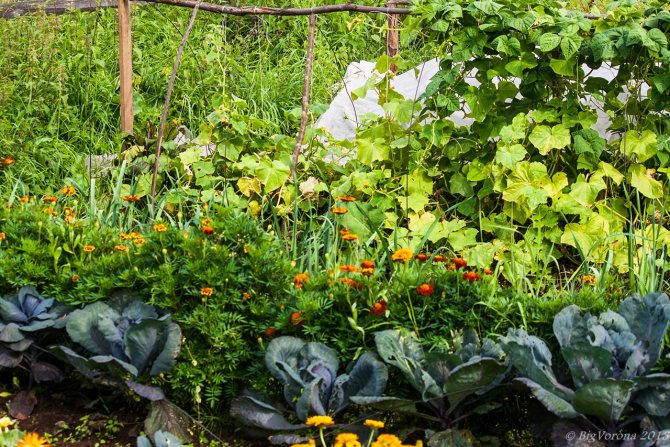

The effect of urea on vegetation
Nitrogen is one of the basic building materials for cultivated vegetation. Under the influence of nitrogen, the following processes occur:
- Vegetative green mass set
- Increase in the percentage of protein in fruits
- Abundant and long flowering
- Increase in yield
- Long-term storage of the crop
Urea fertilizers for open ground are especially appreciated for their completeness of assimilation. The ammonium form of nitrogen is more fully and quickly absorbed by vegetation, which makes urea an incredibly effective fertilizer.
Still, you shouldn't overuse urea. Cultivated vegetation is prone to "fattening up" from an excess of nitrogen. A sign of a carbamide overdose is the development of a lush and juicy green mass to the detriment of the fruit. That is, the stems and foliage will be large as never before, and there will be one fraction in the harvest.
Now in more detail about the use of urea-based fertilizers.


Fertilizer urea - reviews on the application for plants and flowers
On the forums, gardeners and vegetable growers leave a large number of reviews about the use of urea in the garden and garden beds. Some of them are listed below.
Natalia, 45 years old, Volgograd:
“I use the Urea preparation for spraying garden and garden plants, as such foliar dressing improves the formation of ovaries and ultimately helps to increase the yield of garden and garden crops.”
Miroslava, 39 years old, Yaroslavl region:
“I always treat my indoor plants with urea in the spring. This product activates the growth of vegetative mass and promotes the abundant flowering of my green "pets". "
Tatiana, 40 years old, the Far East:
“I always feed the vegetables in the garden with urea at the beginning of their growth. This fertilizer allows plants to grow more actively, improves the growth process of root crops and the formation of ovaries. Urea is a time-tested remedy, many people trust it. "
Nikolay, 49 years old, Cheboksary:
“I grow a lot of things in the garden and I have to constantly monitor the condition of the plants and carry out preventive work. Fruit trees and shrubs in the spring, before bud break, must be treated with a carbamide solution against pests. The main thing is to observe the dosage of the drug when preparing an aqueous solution, since too high a concentration of the drug can harm fruit shrubs and trees. "
Svetlana, 50 years old, Ryazan:
“In my garden, in the spring, I add carbamide to the tree trunks of fruit trees - this fertilizer activates the growth of new shoots and foliage, promotes the formation of ovaries and, as a result, improves the yield of trees. I fall asleep in the trenches, which I dig around the tree-trunk circles, fall asleep on top of the soil and water it. I don't think there is a better remedy than urea for spring feeding of apple trees. "
Urea - nitrogen-containing fertilizer
, which is characterized by ease of use, ease of preparation of an aqueous solution and a high nitrogen content in its composition.
Therefore, urea is very popular among vegetable growers and gardeners who use it as a fertilizer, as an effective remedy against pests. And amateur flower growers use the drug for feeding indoor plants and flowers.
Testimonials
Inna Gavrilovna, 65 years old, Penza region:
In times of food shortage, the vegetable garden was a salvation for the whole family. Manure or water infusion of weeds was used as a nitrogenous fertilizer. I treated the land with granules before planting potatoes, and there was much less Colorado potato beetle.
Marina, 45 years old, Volgograd:
Recently bought a personal plot outside the city. We grow vegetables and flowers for ourselves. I like urea granules very much - they do not smell, give good results and are cheap. You can choose fertilizer in combination with phosphorus and potassium. There is also liquid urea. For each plant species, the composition is already balanced.
The availability of fertilizer is clear and the effectiveness is undeniable. Sufficient feeding of garden crops with urea is a guarantee of plant health and a rich harvest. Organic food from the garden is much healthier than store food with nitrates and pesticides. The main thing is to observe in all measure and carefully read the instructions for use of urea.
What plants are suitable for
It is allowed to use for all types of crops: ornamental, fruit and berry, vegetables, shrubs, trees. It gives excellent results when feeding agricultural species.
Attention should be paid:
- it is allowed to use when sowing, but there must be a layer of soil between the plant and the fertilizer;
- before sowing, using urea, you can get rid of ammonia and saturate the soil with nitrogen;
- not recommended, but allowed to use during the growing season;
- an excellent result can be achieved if you use the foliar feeding method.
The gardener can use urea when sowing cucumbers, tomatoes, berries, potatoes, flowers, shrubs, trees.
Urea for berry bushes
When fertilizing strawberries, it is important not to overdo it.Lack of nitrogen causes the berries to grind and reduce their number, but the excess greatly spoils the taste and aroma. If there is no experience in using urea, it is better to fertilize strawberries with diammphos or nitrophos.
Urea is more suitable for feeding strawberries, gooseberries and currants. Fertilizer is scattered under the bushes at the very end of summer or early autumn in order to increase yields next year. During the period of ovary formation and flowering, urea can be sprayed with gooseberries and currants.
Urea - application of fertilizer in spring
In the spring, the use of urea for the preparation of beds in the garden and in greenhouse conditions is necessary, especially on depleted soils. When introducing dry granules into the soil, they are usually buried in the ground to a depth of at least 8-10 cm. It is better to introduce the preparation into moist soil for easier digestibility.
Spraying with urea in spring - video
Also, to improve the fertility of the soil and feed the planted plants in the spring, a urea solution is prepared, which is watered to the root crops. You can also use a urea solution to treat perennials against insect pests - the principle is described above.
Agrochemical properties of fertilizers
An excellent mineral fertilizer that does not contain harmful nitrates. Its agrochemical properties include:
- an excellent option for the root subcortex of plants;
- provides large increases to the original yield;
- it works great on acidic soils, which saltpeter cannot boast of;
- practically does not acidify the soil, in which ammonium sulfate is seen;
- in terms of nitrogen content, it practically does not differ from other useful compositions, however, it is suitable for use in those areas where it is prohibited to use fertilizers;
- excellent agrochemical composition, which allows the substance not to be washed out of the soil.
A weak effect can be exerted due to the influence of ammonia in the soil, which can be avoided by increasing the concentration of the fertilizer. It is not recommended to fertilize the soil during planting, but it is allowed.
When urea is used together with potash fertilizers, negative factors are eliminated. That is, the effect of ammonia is weakened.
How to fertilize fruit trees with urea
Urea is the preferred fertilizer for fruit trees. It is applied three times during the growth period: at the beginning of the appearance of greenery, during the flowering period and also during the ripening period of the crop. The dosage is increased for the third time.
Proportions of carbamide for trees:
- Apple tree. 150 g of urea is applied under non-fruiting trees, and 250 g under fruit-bearing trees.
- Plum. One tree counts 140 g.
- Cherry. 100 g under a tree.
- Rowan black-fruited. For trees without fruits, 120 g each, for fruit-bearing trees - 170 g.
Urea is introduced along the barrel circle and sprinkled with earth. To better assimilate nitrogen, you can deepen the urea by 10-20 cm into furrows or rows.
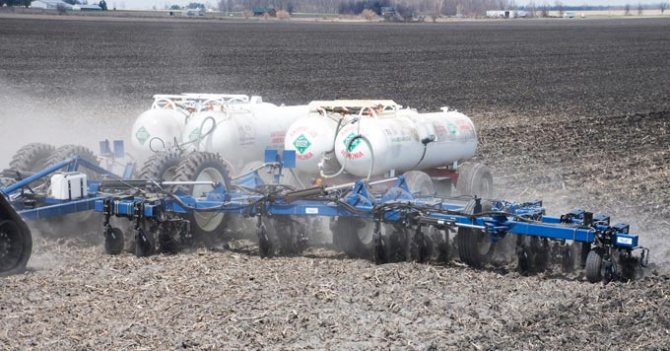

Combination of urea with other fertilizers
Urea (carbamide) cannot be mixed with alkaline compounds: after such actions, nitrogen disappears, and it becomes ineffective to use the resulting fertilizer.
Experienced gardeners know that mixtures of carbamide with potassium chloride, manure, ammonium and sodium nitrate are stored for a long time. Before fertilizing trees in spring, urea is often mixed with ammonium sulfate.
It is categorically contraindicated to combine urea with black ash, lime compounds, calcium nitrate: the production of such a mixture by crops can lead to their death.
Spring treatment of garden crops and trees with urea is necessary in every rural and urban garden plot. Preparing liquid feed is the most rational method. It is enough to dissolve the amount of granules required for a particular plant species in 2 liters of water, add the rest of the liquid and water. Knowing how to properly use the properties of urea as a fertilizer, the farmer can be sure of a good harvest.
loading ...
Appearance, physical properties and composition of urea
Urea (urea) was isolated at the end of the 18th century by the Frenchman Hilaire Maren Ruel. Hence the name of the fertilizer. A few years later, the founder of organic chemistry, Friedrich Wöhler, obtained this substance from inorganic ammonium cyanate. In agricultural land, grade B carbamide is used, and on an industrial scale - A.
Urea as a fertilizer has the texture of granules up to 4 mm in diameter or crystalline powder. There is no smell, refers to substances readily soluble in water. As the temperature of the liquid rises, the solubility improves. However, the pellets do not absorb water, which is important during storage. Urea can be produced in large volumes. Clumping will not be a problem, which is why it is so common in agriculture.
It is based on nitrogen, about 50% in the composition. The remaining components are biuret and water. Aqueous fertilizer solutions are well absorbed by plants. Its role is especially important in pre-sowing work, during the formation of greenery and active growth of horticultural crops. The most effective is humated urea. This is a urea that contains humic salts - nitrogenous compounds. They help in better nitrogen uptake. In this fertilizer, the nitrogen content is reduced to 44%, and the salt concentration is 1%.
Correct Application of Liquid Urea
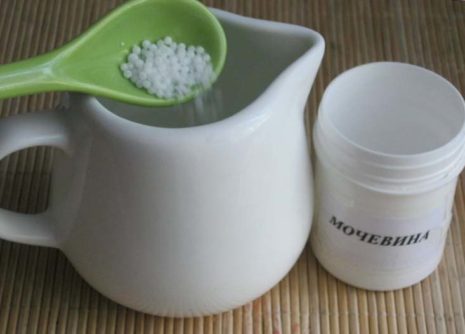

Nitrogen fertilization gives an impetus to the development of plant shoots, ensures good leaf growth, and promotes productivity.
The composition of urea contains ammonium carbonate, which evaporates quickly. That is why, when applying dry urea granules, it is required to embed them in the soil.
Liquid urea, that is, dissolved in water, will be much more effective. But it is required to follow certain rules for its use and fertilization rates.
You may be interested in: Processing strawberries with copper sulfate in spring Hydrohumate and peat oxidate: instructions for use for cucumbers Fertilizing for tomatoes from yeast - fertilizer recipe
Liquid top dressing will be shown if the plants are deficient in nitrogen:
- very slow growth, weak shoots;
- the plants outwardly look weak, oppressed;
- leaf blades acquire a yellow color, become covered with spots;
- falling leaves;
- weak branching of plants.
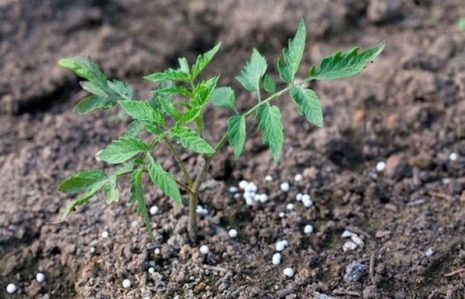

It is possible that a small number of ovaries is formed, which, accordingly, will affect the yield. At the same time, it is important to avoid excess nitrogen, as indicated by the following signs:
- powerful dark green leaves (the plant "fattens");
- a very large number of leaves on the bush;
- prolongation of the ripening of fruits, since the leaves are primarily in growth.
Foliar dressing
Almost all gardeners (some more, some less) use plant dressing at the root. But this is not enough, and then experts recommend to carry out foliar "dinners" for plants.
They in no way replace the usual ones, but they serve as a very good help to them.
ON A NOTE! In practice, it has been proven that the use of this type of dressing can increase the yield of all crops by 35-40%.
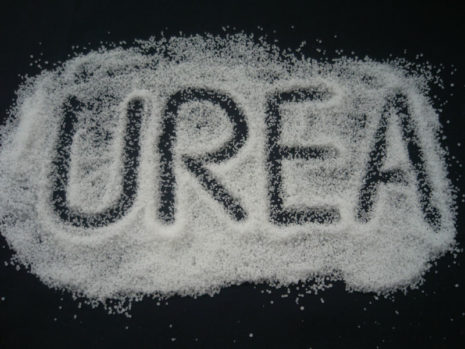

As you can see, it is not worth underestimating foliar dressing, it is much better to take and prepare a special composition, and then, using a spray bottle, spray the plant leaves. The proportions will vary: one for vegetables, and another for trees and shrubs.
Cucumbers will "thank" you if you spray during the period when the first ovaries appear, then you can also spray tomatoes. During the period of fruit ovary, zucchini is also sprayed (it will be enough twice with an interval of 10-12 days), and one foliar feeding is quite enough for beets.
IT IS INTERESTING! Foliar urea treatments are also practiced on large fields of vegetable farms where cereals, potatoes, and sugar beets are grown.
Foliar treatments are very useful for flowers, both summer and perennial plants.The flower garden will delight you with magnificent flowering if you use a urea solution to spray the plants once a month.
Application in the garden
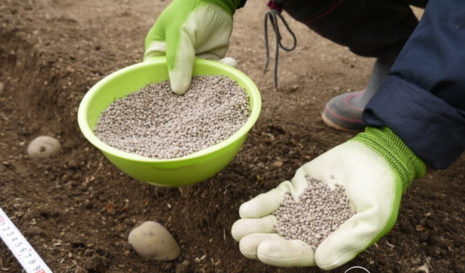

The introduction of granules or tablets of urea as top dressing in various ways has been described above. But we must remember that to fertilize various garden crops, certain rules must be followed. It is impossible to apply urea for all crops in a row, without observing the dosage, timing, ignoring the phases of the vegetation of plants.
Potatoes are fertilized before planting, while urea is introduced "in one bottle" with potash fertilizers, and all this is embedded in the soil.
Norm: 2-2.5 kg per one hundred square meters of the garden.
One of the vegetables that "love" urea are tomatoes. They respond well to such feeding, while it is better to apply fertilizer when planting seedlings (in the holes).
ON A NOTE! When adding urea when planting tomatoes, further additional fertilizing with this fertilizer will not be needed.
A solution with urea and potassium chloride will be useful at the beginning of the growing season of garlic (watering at the root). Proportion: take 8-10 grams of each fertilizer per bucket of water.
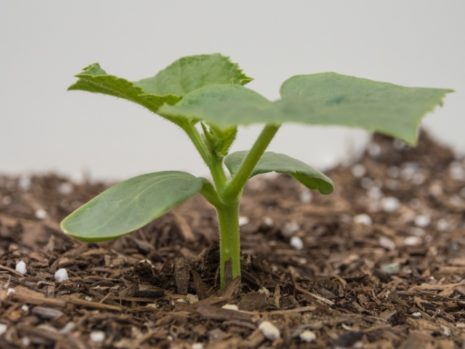

Spraying with urea will be useful for cucumbers (especially for those varieties that are grown in the greenhouse), and for plants on the ridges, they use top dressing with a solution. For spraying, potassium chloride and urea (20 grams and 10 grams) are used, which are mixed with water, for irrigation, 15 grams of urea are diluted in a bucket of warm water.
If fertilizers were not used when planting cabbage, it is also recommended to feed with urea by preparing an aqueous solution (30 grams of fertilizer are taken per bucket of water).
Application in the garden
For fruit trees and berry bushes, urea is one of the most favorite dressings. Gardeners actively use carbamide granules, since thanks to them, yields increase significantly, and plants acquire immunity from diseases and pests.
Usually they are applied immediately with granules, falling asleep in rows or grooves and always covering them with earth on top. The planting depth is at least 10 cm. It is convenient to do this according to the diameter of the tree trunk circle.
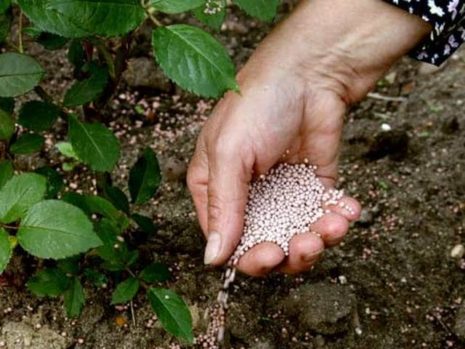

Feeding schedule:
- as soon as the leaves begin to bloom;
- during the flowering of trees and shrubs;
- during the ripening of the fruit.
While the plants are just gaining strength, the dosages of carbamide are small: from 100 to 150 grams for one tree, 120 grams for each shrub.
During the ripening period of berries and fruits, the dose can be increased (but without fanaticism): from 140 to 25 grams for a plant, 170 grams of granules for a shrub. The apple tree consumes most of all urea; it also reacts very well to plum fertilization.
In the garden, urea is also used for pest control. It has already been said about the spring treatment, but urea can be used in the fall.
A composition is prepared: about 70 grams of fertilizer are taken per liter of water, and then trees and shrubs are sprayed. Time: the beginning of leaf fall, when the first leaves just fly from the crowns. It is recommended to spray the branches of trees and shrubs, you can also spray with a solution on fallen leaves. This will avoid the occurrence of infections in the next season, exclude the attack of pests. Also, treatment with urea will serve as an additional top dressing for trees.
The use of urea in the garden and in the garden
All farmers know about the need to use fertilizers in the garden and vegetable garden. The condition of garden and horticultural crops and their fruiting depends on their correct use.
In the spring, for the growth of the vegetative mass of plants, they need nitrogen in an easily assimilated form, therefore gardeners and gardeners use various nitrogen-containing preparations as fertilizers. One of these most popular and fairly cheap fertilizers with a high nitrogen content is urea.
This article will tell you about the main properties of carbamide (urea), its use in the garden and in the garden, how to apply the drug to the soil at different times of the year, and much more.
The content of the article:
1. Urea formula - urea composition and appearance of fertilizer 2. Signs of nitrogen deficiency in garden plants and garden crops 2.1. Symptoms of excess nitrogen in plants 3. Interaction of urea with other fertilizers 4. Instructions for the use of urea 4.1. How to properly fertilize the soil with urea 4.2. Potatoes 4.3. Tomatoes 4.4. Garlic 4.5. Cucumbers 4.6. Cabbage 4.7. Squash, eggplant 4.8. Cereals 4.9. Strawberries and strawberries 4.10. Currant 4.11. Garden flowers 4.12. Houseplants and flowers 4.13. Fruit trees 5. Treatment with urea from diseases and pests 6. Application of fertilizer in spring + video 7. Application of urea in autumn + video 8. Foliar top dressing with urea + video 9. Advantages and disadvantages 10. Differences between urea and ammonium nitrate + video 11. How to store fertilizer 12. Fertilizer urea - reviews
How to understand when plants lack nitrogen
Nitrogen deficiency can be characteristic of any type of soil, but most often sandy, sandy loam and loamy sod-podzolic, as well as red earth and sierozem. As a rule, this is found in the spring, when the mineralization processes slow down under the influence of low temperatures. Usually ghosts of nitrogen deficiency are visible to the naked eye.
Signs of nitrogen starvation in plants:
- light or yellowed green mass;
- slow growth and development;
- depressed appearance;
- small inflorescences;
- small and narrow leaves;
- dying off and shedding of ovaries.
It is necessary to take into account all the signs, since yellowing of the leaves is also observed with a lack of moisture and iron. To accurately "diagnose", you need to look closely at the greenery in the daytime. From a lack of moisture and iron, the leaves wither during the day, first the young leaves turn yellow, and with nitrogen starvation, the old ones first.
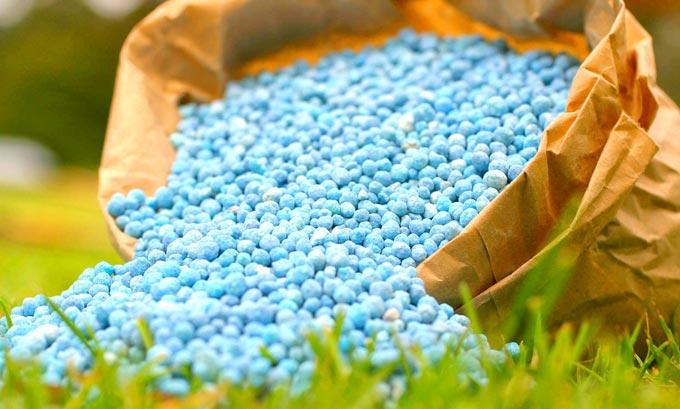

Agricultural crops
Any culture, whether vegetable or fruit and berry at the stage of vegetative development, needs nitrogen. That is why urea can be used safely. However, it is important not to forget that each plant requires an individual approach.
In particular, this concerns the level of concentration of the composition with which they will be processed. So, for example, potato tubers, onions, garlic, tomatoes, peppers, cabbage can be treated with a solution based on 20 grams of the drug per square meter. As for cucumbers and peas, seven grams per square meter is enough.
The solution, which contains 25 grams of carbamide per liter, can act as a top dressing. It can be used for tomatoes, cucumbers, cabbage, strawberries. The main thing is to take into account that the replenishment process should occur with a certain regularity. Fruit and berry bushy seedlings (currants, gooseberries and others) are allowed to be fertilized with a preparation at a ratio of 12 grams per liter of warm water.
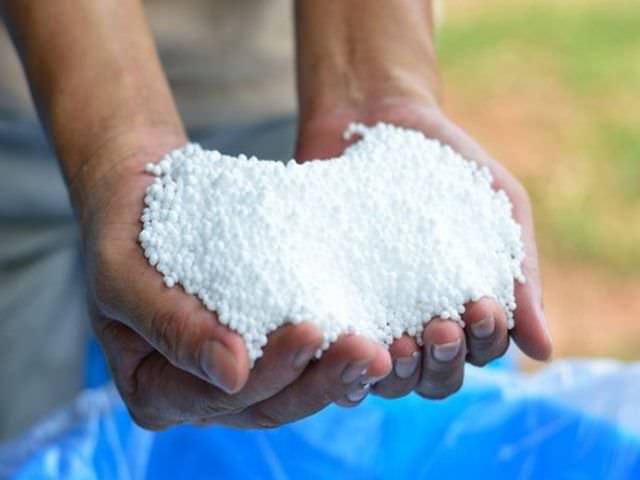

It is a well-known fact that urea gives the plant the strength for rich foliage growth, so its application to trees will be very appropriate. For an apple tree, you need 220-260 grams per bush. Cherries, plums will require 115-160 grams. In this case, urea can be added to the roots of trees in its natural form, or it can act as a solution. It is important not to forget about periodic watering of the trunks.
Urea belongs to the class of nitrogen fertilizers. If you compare it with other types of this class, for example, ammonium nitrate, you can find a number of distinctive characteristics. The advantage in this comparison will remain with urea. Its advantages include:
- the maximum level of growth acceleration;
- top dressing outside of root processing;
- burning of foliage is excluded.
Compliance with all the rules for the use of urea as fertilizer will help grow beautiful plants with a rich harvest.
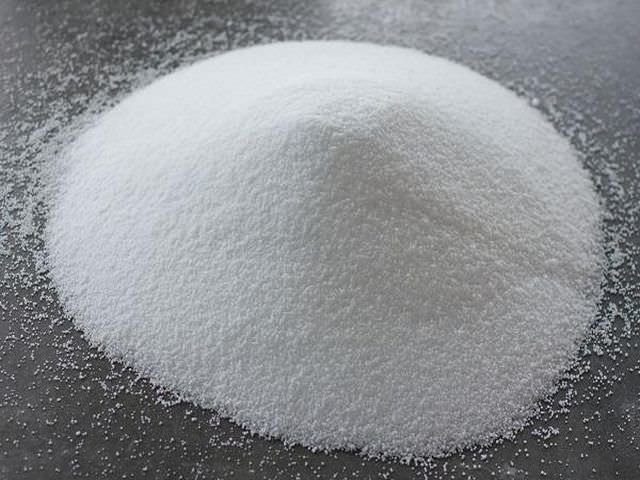

General information on fertilization
The formula of the substance is (NH2) 2CO, the chemical name is carbonic acid diamide. It is obtained from ammonia and carbon dioxide. Urea has a crystalline structure and is usually granulated during production. Granules 2-3 mm in diameter, colorless or white, odorless. They are slightly hygroscopic, but well soluble in water, and can be transported without problems. They must be stored in plastic bags, granular urea does not stick together, almost does not cake. The fertilizer belongs to the 3rd class of hazardous substances (moderately hazardous), you can work with it without protective equipment.
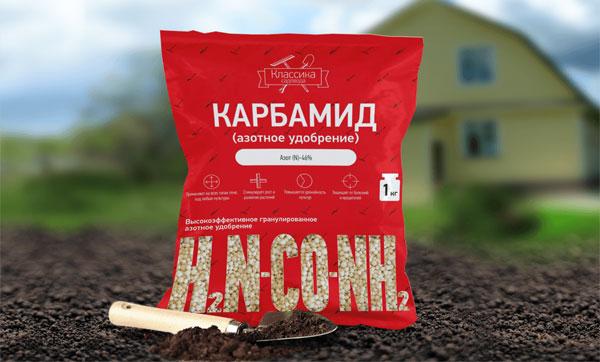

Urea contains 46% nitrogen, more than any other nitrogen or mixed fertilizer. The element is in the amide form, it was found that in this type of plants it is poorly absorbed. The rate of conversion of nitrogen into the mineral form is influenced by the temperature and reaction of the soil: in warm and neutral soil, the process is fastest, in cold, acidic or alkaline, it slows down.
Granular urea contains biuret, this substance, if it is more than 3%, can inhibit and poison plants, especially sprouts. In urea, it should be no more than 1%, however, this figure is usually not exceeded in the fertilizer produced by the industry.

